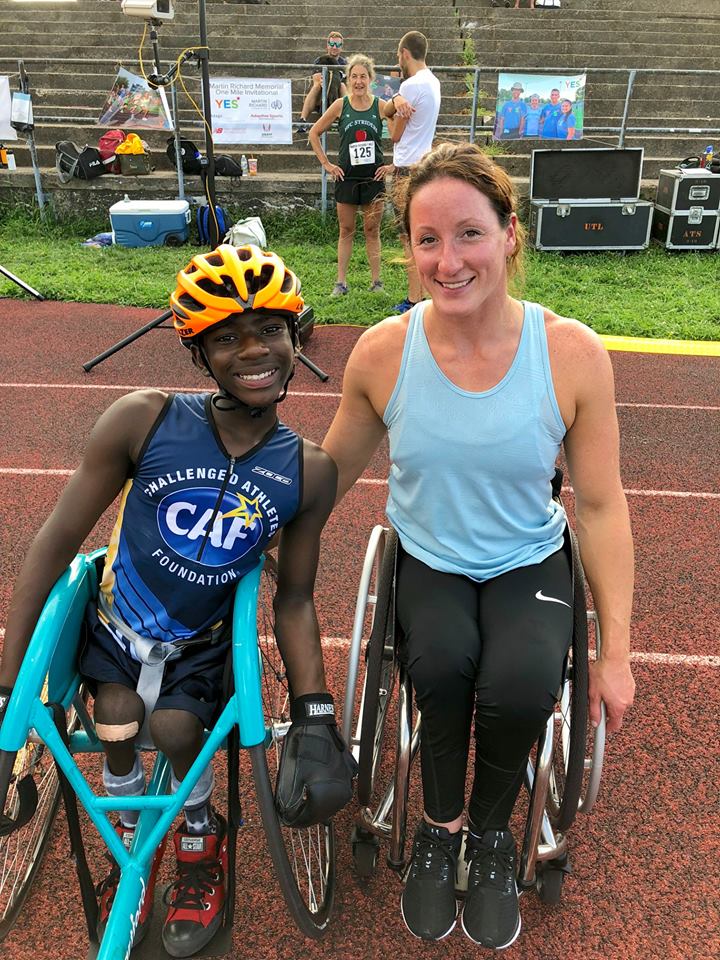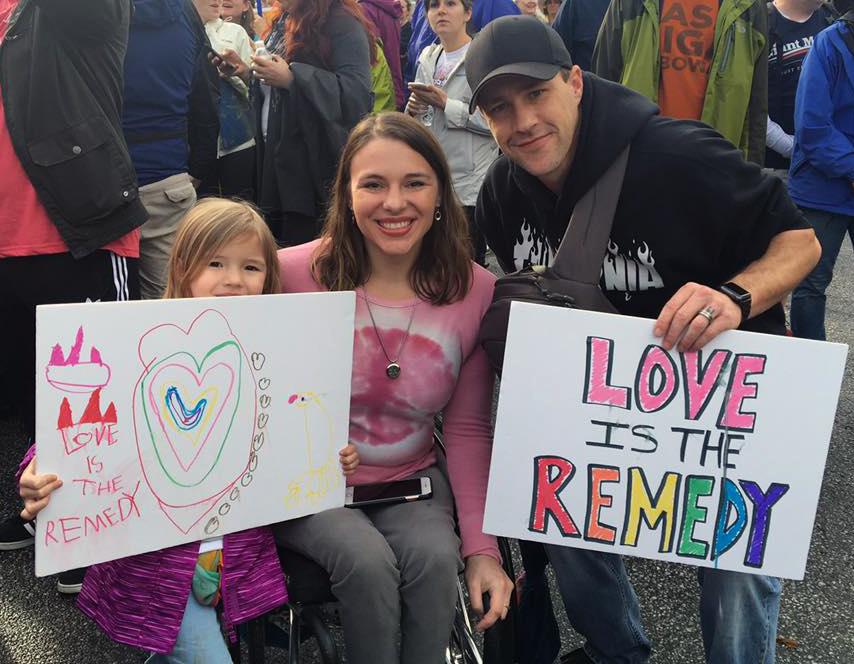 We’ve got a soft spot for kids who roll here at Cure Medical. We’ve found them to be some of the most resilient, courageous and awesome individuals we’ve ever met.
We’ve got a soft spot for kids who roll here at Cure Medical. We’ve found them to be some of the most resilient, courageous and awesome individuals we’ve ever met.
Cure Advocate Kristina Rhoades grew up using a wheelchair after enduring a spinal cord injury at just 10-months-old.
In this story for the CURE NATION, Kristina talks about what it was like growing up as the only kid in her area that used a wheelchair and what encouraged her to be happy and successful as she grew into an adult. Plus, we’ve spotlighted cool kids who are embracing life on wheels, courtesy of the Wheels UP! Photo Contest.
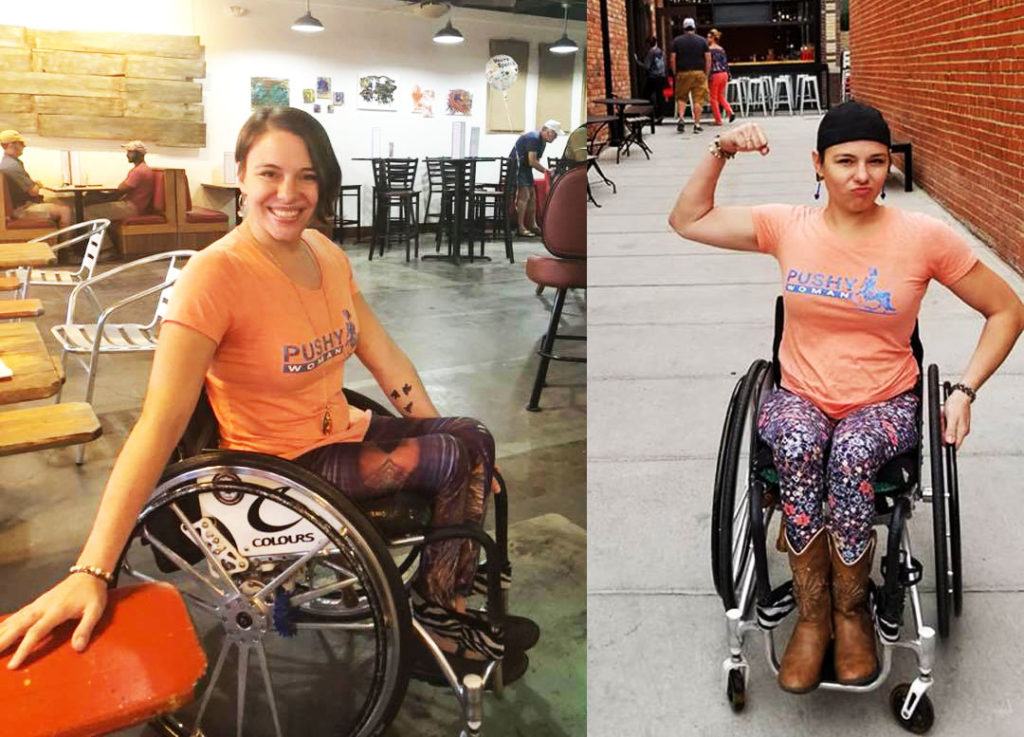
Kristina Rhoades loves telling people she’s a “pushy” woman!
Growing Up as a Kid on Wheels
In 1984, when Kristina Rhoades had her spinal cord injury, disability resources, programs and community networking were not as prevalent as they are today.
Kristina recalls, “Pediatric chairs were definitely not as cool as they are today. In fact, I don’t think we got my first wheelchair, a little Quickie, until I was about 4 or 5.”
“Until then, it was easy enough for me to ‘army crawl’ around my house, or when visiting friends or family. When we were in public, my mom would just carry me or use a stroller.”

Kristina leads by example in raising her daughter, Kamryn, today.
“My family was pretty great when it came to instilling self-confidence in me. They encouraged me to try new things and to think outside of the box to get things done. They didn’t make excuses for me or make me feel like I wasn’t able. They made me believe that I had the same opportunities and responsibilities as everyone else. For example, at just a year old, my mom had me in swimming lessons and in elementary school I began horseback riding on a regular basis.”
“I was an active kid and I think that had a positive, powerful impact on my future self and what I’ve always believed I could accomplish.”
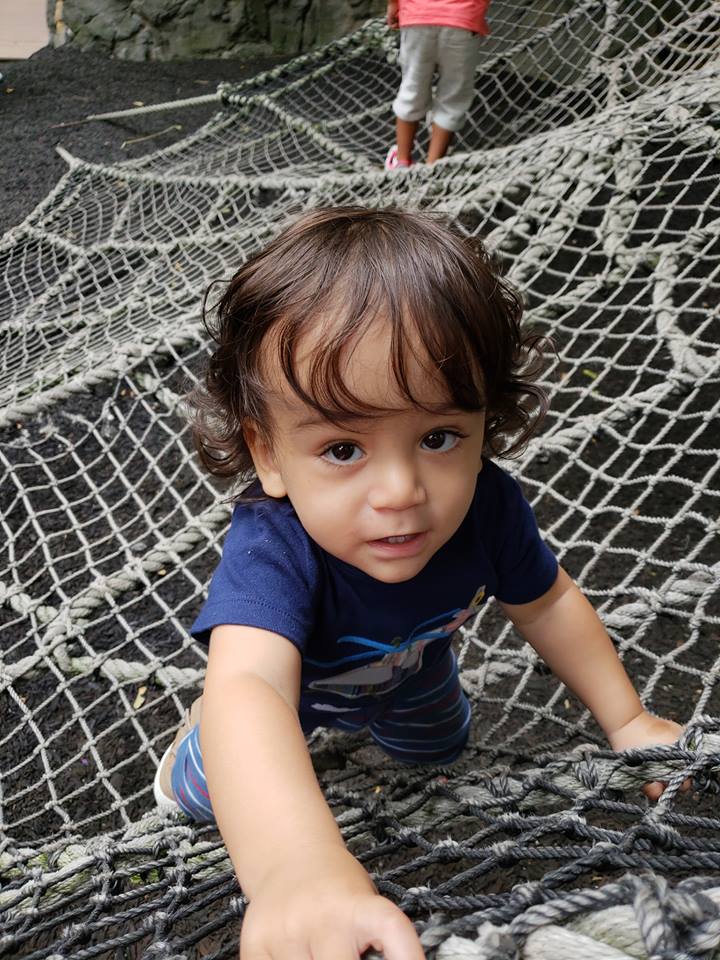
From the 2018 Wheels:Up Photo Contest, Marls Byrnes says, “My 15-month-old son Liam was born with spina bifida. This was taken at the Bronx children’s zoo. Liam was attempting to climb the spiderweb! He was able to go one step to the side but not up and down … yet!”
“I went to a normal, public school,” Kristina continues. “In fact, because I was in a military family, I went to 5 different public schools in 6 years of elementary school. I became really good at being ‘the new kid in the wheelchair.’ And, for most of those schools, I was the only kid in the whole school that was in a wheelchair, so I definitely stood out. Real young, I learned how to navigate people’s expectations and assumptions about me and establish a sense of independence.”
“I’d say one of the weirdest parts about being a kid in a wheelchair was dealing with other people’s sadness about me, when I felt perfectly happy.”
Emerging adaptive athlete “Delmace is getting some racing advice from his hero, Tatyana McFadden.”
“I mean, I felt normal and joyful, but I could tell that, very often, when I met a stranger they felt sad or sorry for me. I remember wishing that they didn’t have to feel that way – wanting to convince them that nothing was wrong with me.”
Kristina says that aside from positive family support and motivation, several other life experiences contributed to her continued happiness and confidence. Below are some positive experiences with lasting benefits for kids who roll.
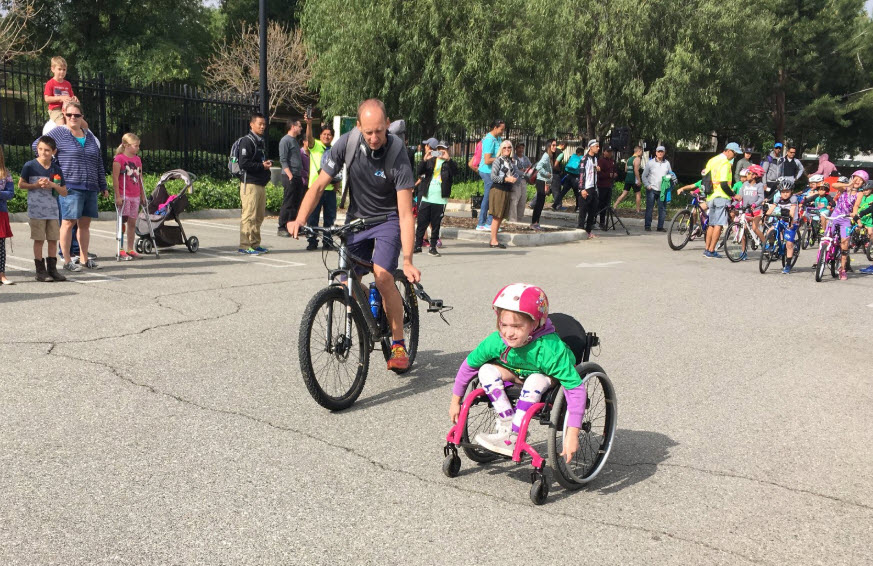
Sara says, “This is my daughter, Melody, age 8. This is her at the start of her very first triathlon. Loma Linda, CA, PossAbilities Triathalon”
The importance of introducing Kids to Adaptive Sports
“In about 3rd grade,” Kristina shares, “my parents found an adaptive sports program for youth called Super Sports Saturday. A fantastic guy named Wes Harley, who was also a wheelchair-user, ran the program and, let me tell you, it had a huge impact on me. Wes was handsome and happy, with a fun job and cool sports car.”
“I’d never known anyone like that in a wheelchair. It seemed to unlock all this potential in me.”
Shannon Gaglairdi says “here’s my son on opening day of Challenger Baseball at Ranken Jordan.”
“He would demonstrate sports for us and give us the opportunities to try them out – activities that I thought I’d never be able to participate in – and I was amazed.”
Getting kids who roll involved with adaptive sports can have so many benefits, including building independence, strength, self-confidence and so much more. It’s a great place to meet other kids with disabilities and mentors to give an example as to what they’re capable of achieving.
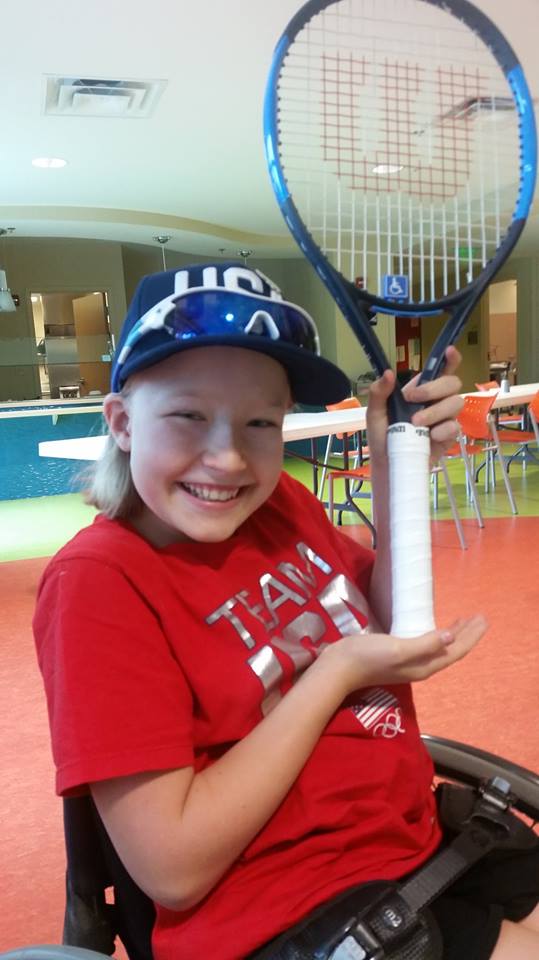
From the 2018 Wheels:Up Photo Contest, “Emma attended the USA Jr. Wheelchair Tennis Camp at Lakeshore in Birmingham, Al. She had just replaced the grips on her racquet and was ready for to play!”
If you’re not sure where to find a program, reach out to a local rehab hospital, disability resource center or check the Internet!
Or find a local peer group near you using this handy checklist.
Dogs (and other animals) Can Be a Kid’s Best Friend, especially when they roll
In this post for the Cure Nation, we discuss the therapeutic power of pets – and the love between a kid and their animal is no exception. Kristina had all sorts of animals growing up, including dogs, and she says they offered a special kind of support and encouragement.
“I think one of the reasons animals make people feel so good is because they have no judgement; they love unconditionally. Also, their personalities can be so surprising and uplifting,” she reflects.
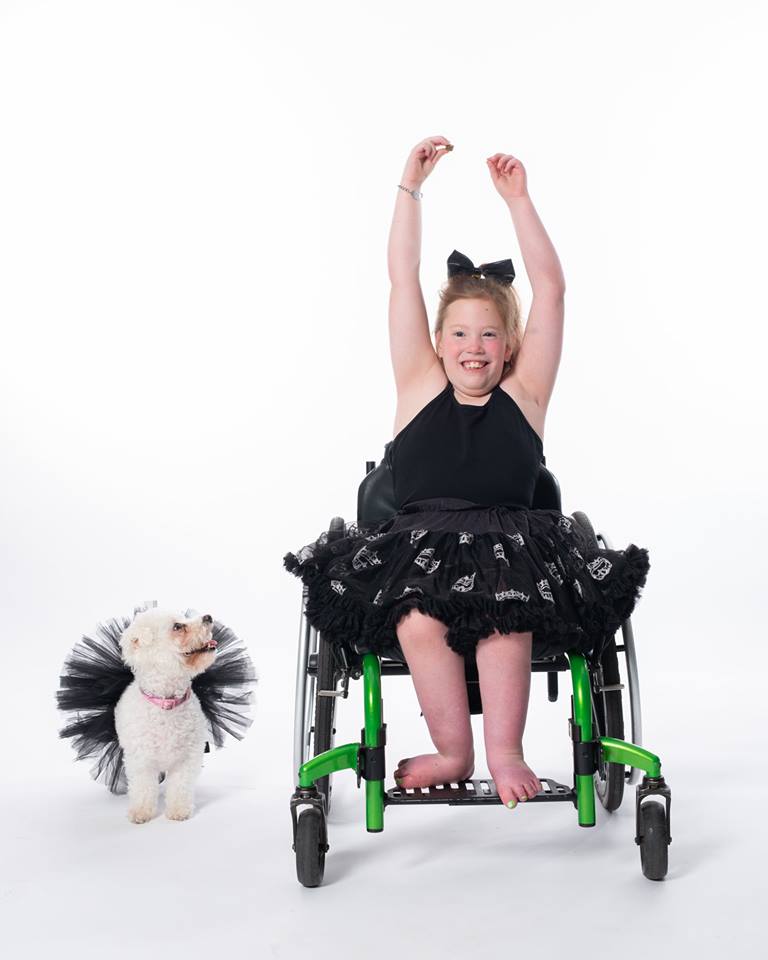
Rebecca says, “Our daughter Izabella and our rescue dog Pixi at Point Performing Arts in Springfield, Missouri. Izabella is part of the “Superstars!” dance class!”
There is a long list of ways that animals can help kids who roll live happier, healthier lives. Companion animals can offer laughs and playtime and never-ending companionship.
They can help bust fear and boost confidence, sometimes by just being around.
Animals can help kids learn responsibility and build patience in their care and training. Companion and service animals can learn to help with physical tasks, like propelling a wheelchair or opening a door, which helps kids who roll become more independent, without having to rely on another person.
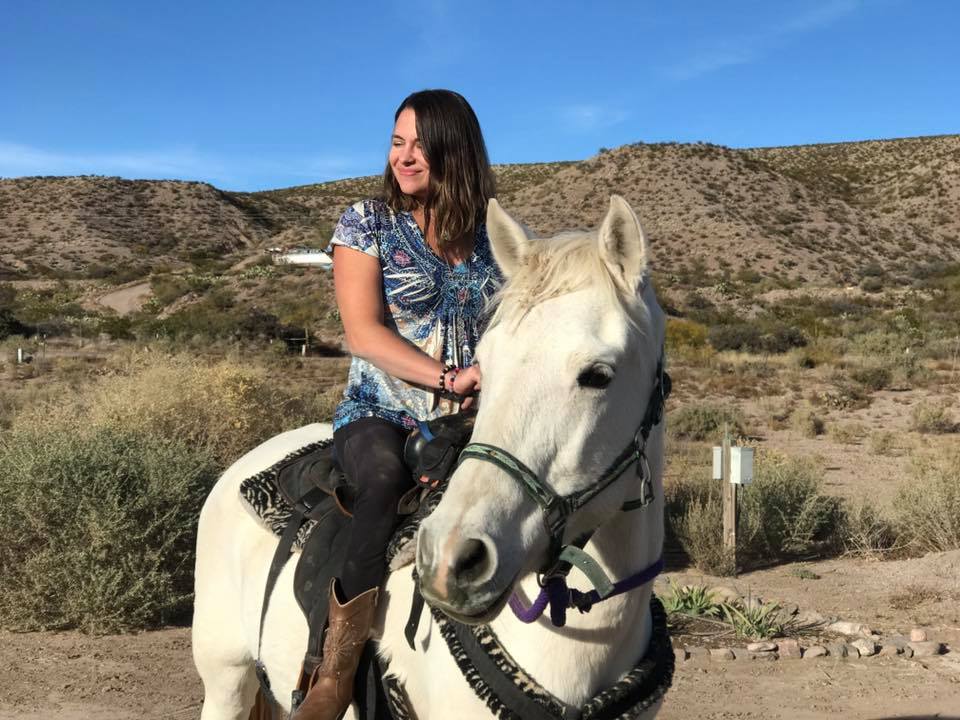
Kristina is a huge proponent of the therapeutic impact of animals.
Community Involvement helps define character in Kids Who Roll
Our life experiences go a long way to molding us into the people we become. As a child, we are constantly forming our ideas about the world, our own abilities, capabilities of others, as well as what we perceive as our own limitations.
When we’re young, we discover heroes, or those we want to aspire to be like, and often, that’s when we first uncover our special talents or future careers.
Kids with disabilities are no different – but to be exposed to those people and activities, they have to be active out in the world.
Kristina shares, “Being socially and physically active as a kid helps build confidence, at least it did in me. Swimming with my peers and riding horses and going on hikes with friends (in the wheel-barrow position) in my youth, all helped me become an adult that was pretty confident that I could accomplish anything I set my mind out to do. Plus, it also taught me to be an active adult which supports a healthy lifestyle.”
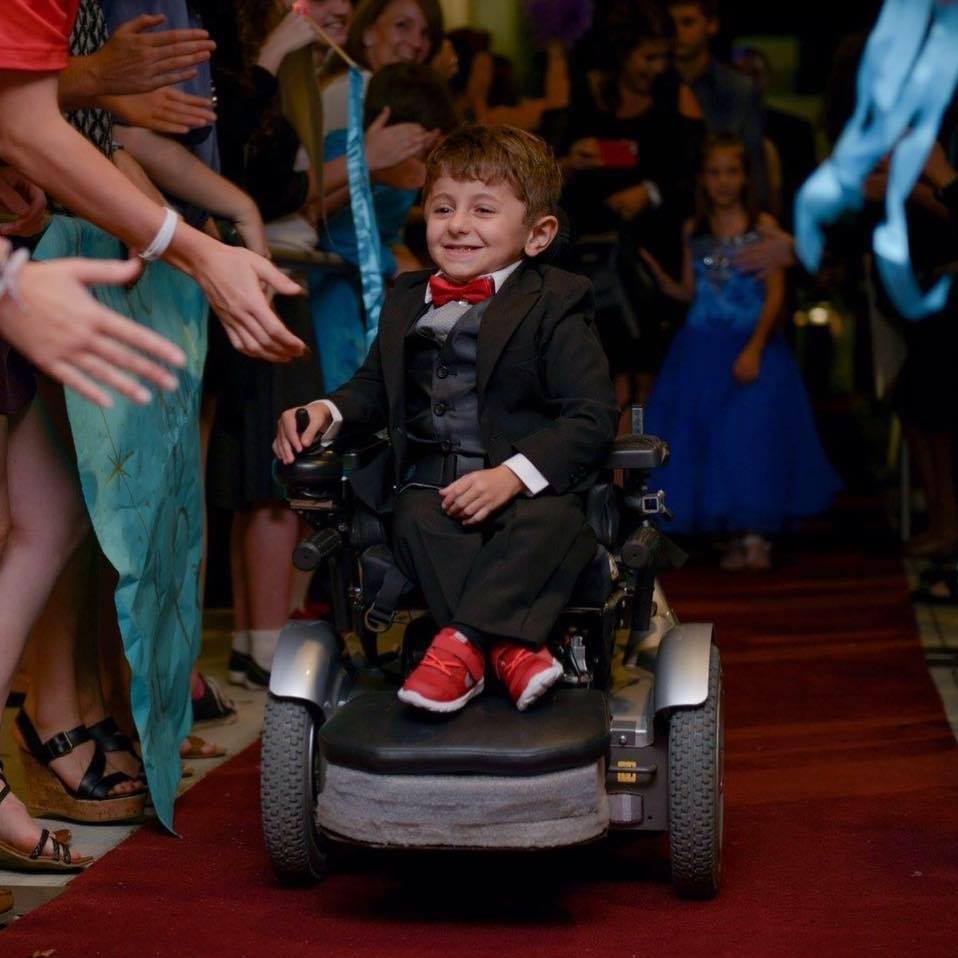
From the 2018 Wheels:UP Photo Contest, Denise Goldhammer says, “My son Conner on the red carpet attending a prom for children with life altering illnesses.”
Cure Medical Offers Free, Educational Resources for Kids who Roll

In addition to the new Pediatric Hydrophilic Cure Catheter®, Cure Medical is offering a new EDUCATION PROGRAM that parents can use to teach their children ‘How To Cath’ using fun, instruction tools like:
- Backpacks in blue and pink with no logos — for discretion at school or away from home,
- Flash cards for boys and girls that also include steps for cathing with or without stomas
- Coloring books with crayons, a complimentary toy – and more!
Contact us to request your free backpack with educational materials to help your child learn the steps for self-cathing.
You can also request a sample of the Pediatric Hydrophilic Cure Catheter® using the REQUEST SAMPLE button on the top right side of this page. When you do, an option will appear allowing you to add an educational backpack to your order.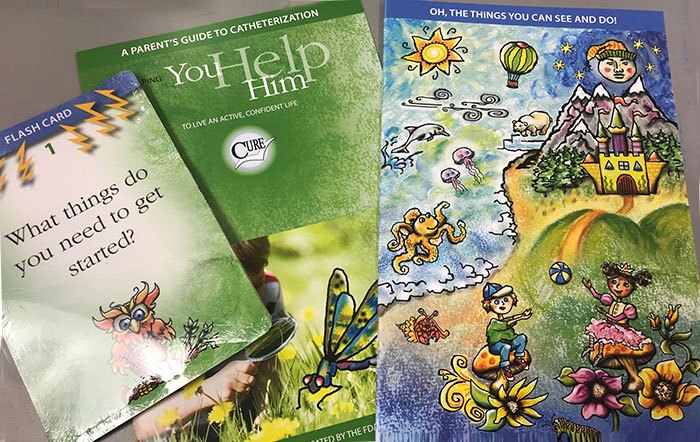
JOIN US FOR MORE ADVENTURES IN THE FREE TO BE SERIES
Kristina Rhoades and the children we serve are just a few of millions of people who roll through life everyday after paralysis, free to be whoever and whatever their heart desires. With plenty of resources and programs available through our community partners, like the Wheels UP! accessible travel initiative with SPORTS ‘N SPOKES magazine, all of our friends in the CURE NATION are individually gifted and unique in their chosen way. We are thrilled to contribute to their success!
Learn more about CURE NATION resources and events here.
Enjoy Our Free Resources & Articles
CURE NATION is designed with you in mind, to offer assistance and education when you need it through a personal support program.
All of the information you find below and on our related social media pages is meant to guide you to places, topics and resources that enhance your life, while also connecting you with a growing group of friends.
- Sign up for our free, CURE NATION e-newsletter to have our latest stories delivered directly to you, once a month.
- Get our FREE LIFESTYLE + ACCESSIBLE TRAVEL BOOKS here.
- Meet us in person at a CURE NATION event.
- Have an idea you’d like to share? Let us know.
- Be sure to take minute to meet our Cure Advocates too.
You may also enjoy:


